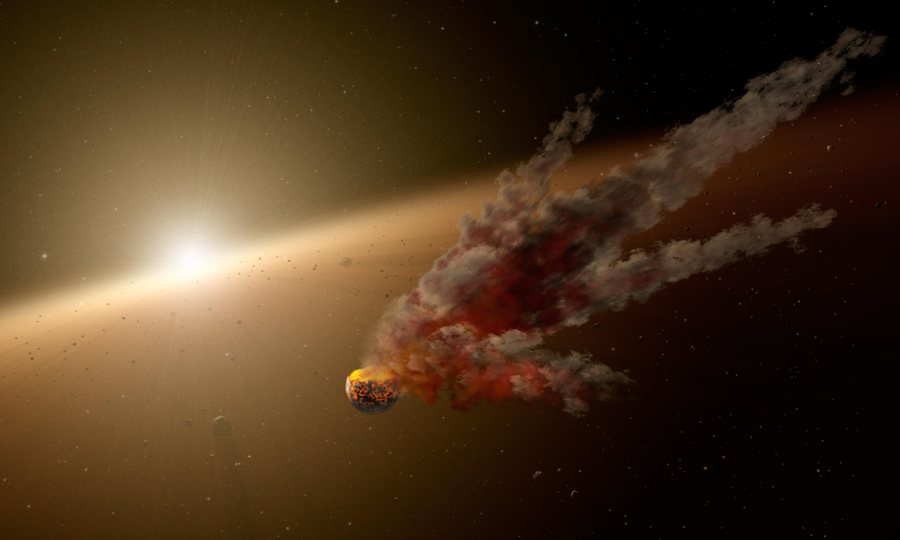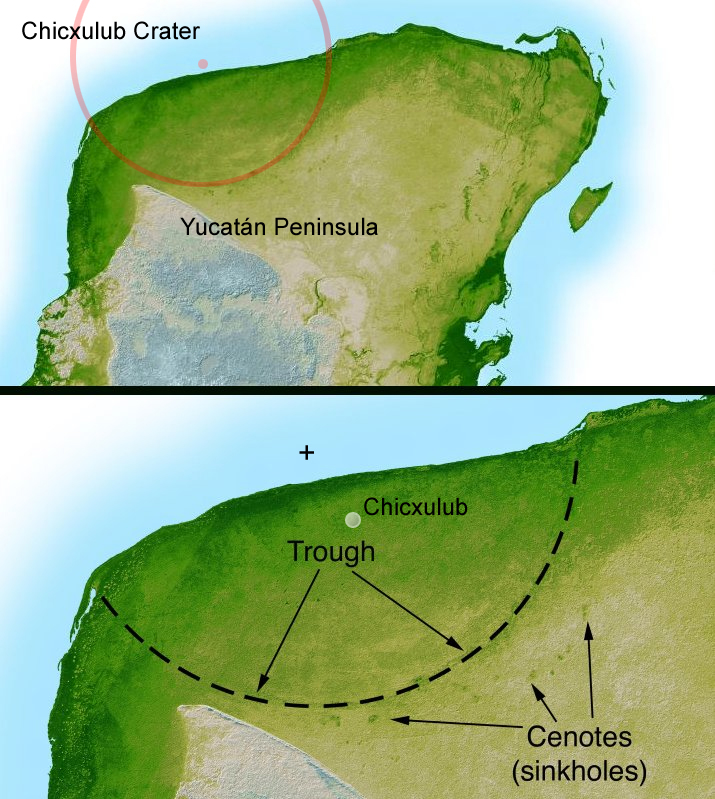
A big nickel spike found in sediments immediately above the spot where a giant asteroid hit the Earth some 66 million years ago, may be the clue scientists need to trace segments of the celestial body that wiped out the dinosaurs along with 75% of all organisms on the planet.
At least that is what a team of international researchers who have just finished drilling into the 200km-wide hole made by the asteroid in the Gulf of Mexico, known as the Chicxulub Crater, believe.
The group, which last year published a paper in the journal Science describing jumbles of “shocked” granite rocks from deep in the crust that had been pushed upward by the impact, said Monday they now have evidence of microscopic organisms in the layers of rock that were deposited in the days, months and years after the impact, BBC News reports:
It should be stressed that the nickel is not in itself an identification of asteroid material.
To have real confidence, the scientists would prefer to see the element iridium.
This is extremely rare on Earth but is frequently associated with meteorites.
But the fact they have found the presence of life that survived the mass extinction caused by the asteroid’s impact could help scientists shed some light one of the darkest times in our planet’s history.

Chicxulub Crater. Image: WikiMedia Commons
Timothy Bralower, a paleoceanographer at Pennsylvania State University, told The Washington Post there are three main theories to explain why the asteroid impact was so devastating, and the presence of nickel belongs to one of them:
One is darkness: Dust from the cataclysm could have spread throughout the atmosphere, blocking out the sun and killing anything that relied on its light.
Another is ocean acidification caused by a sudden influx of carbon dioxide released after the impact.
Then there are the toxic metals expelled by the impactor — things like nickel and iridium that make the ocean a distinctly unpleasant place to be. These will be easiest to test for in the cores taken from the site.
The project to drill into Chicxulub Crater was headed by the European Consortium for Ocean Research Drilling (ECORD) as part of the International Ocean Discovery Program (IODP). The International Continental Scientific Drilling Program (ICDP) also supported the mission.
3 Comments
GinaHaspellsStrongMoralCompass
Image looked at first glance like a someone at the moment of having plunged into water. Now, I cannot unsee it.
Guest
Iridium is not toxic, it is the most inert metal of all. As for nickel, there is larger concentration of nickel in stainless steel spoons and forks, by many orders of magnitude, than would be in the ocean following a large asteroid strike. Also, a large asteroid is not dissolved in the ocean or atmosphere, but is captured by lithosphere.
Gary
Conditions then, not much different to today?